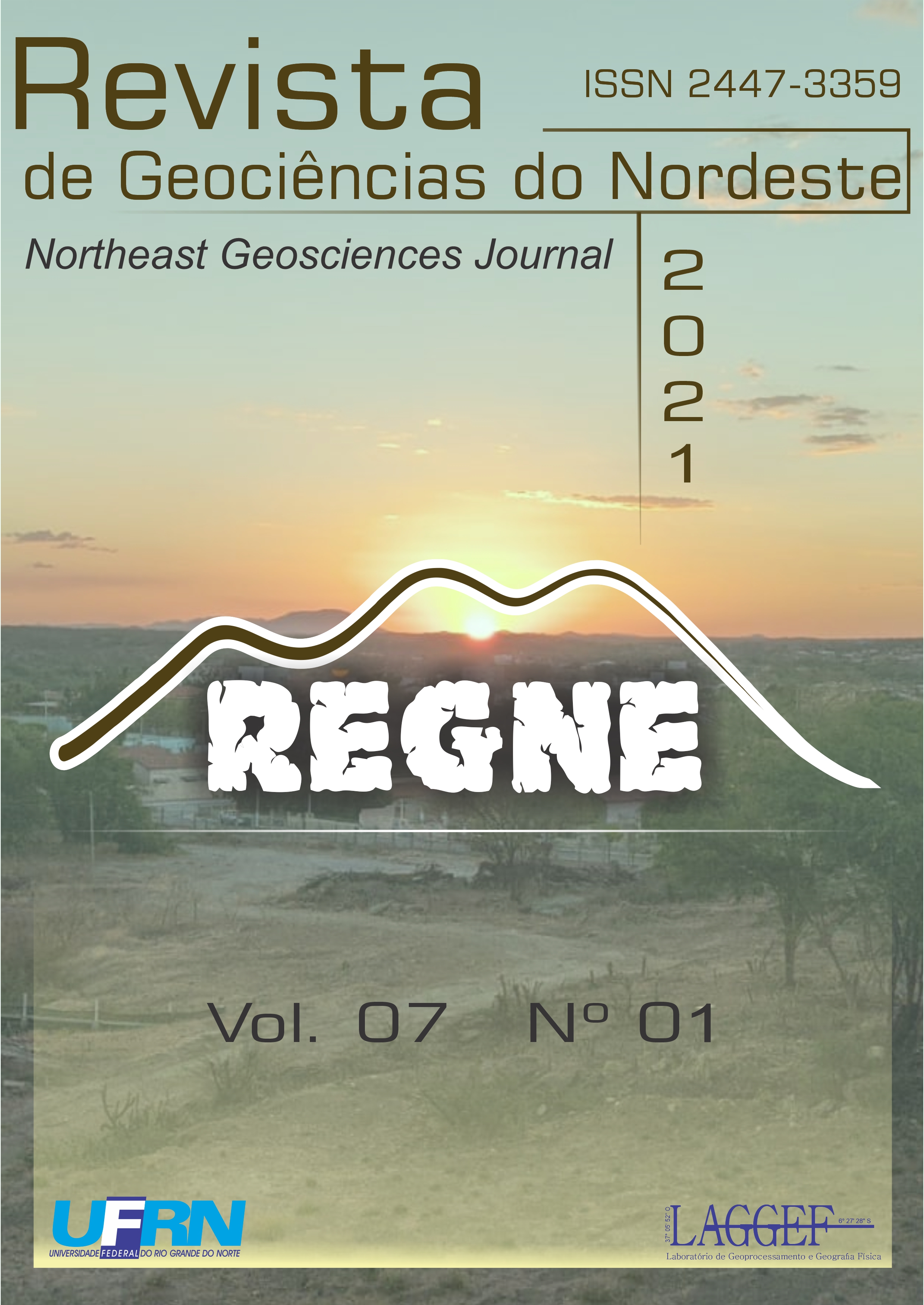GEOMORPHOLOGICAL CHARACTERIZATION OF COLLUVIUM AT MATA GRANDE MASSIF, STATE OF ALAGOAS: A COMPARISON OF MONTANE ENVIRONMENTS IN THE NORTHEAST OF BRAZIL
DOI:
https://doi.org/10.21680/2447-3359.2021v7n01ID22137Abstract
The study of geomorphological dynamics demands the identification of surface processes. From a systemic perspective, the elements of the landscape and the energy inputs acting on them are reflected in the sedimentation environments and their deposits. In this context, the humid exception areas circumscribed by the semi-arid environment of Northeastern Brazil make up a unique environmental set, whose records of past denudational events, in the form of hillslope deposits, represent a high-quality regional proxy for the reconstruction of their temporal evolution. Therefore, this work sought to identify the markers of the geomorphological dynamics of the sub-humid massif of Mata Grande, State of Alagoas, expressed in their surface coverings, comparing them with those of other similar areas on the Borborema Province. The research started from the description of colluviums in the area, by means of grain-size and morphoscopical analysis, in order to draw comparisons with similar materials from other sub-humid montane areas. It was observed that the colluviums of Mata Grande are composed mostly of muddy sand, with debris flows incorporating from pebbles to boulders. The materials revealed to be similar to those of other environments of sub-humid hillslopes of the Northeast, corroborating the existence of a specific dynamic to these environments.


 Português (Brasil)
Português (Brasil) English
English







